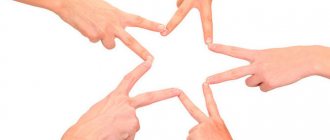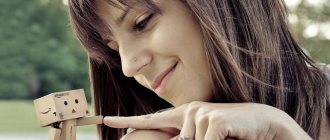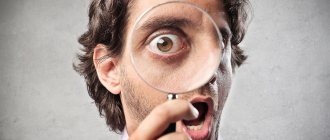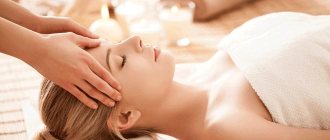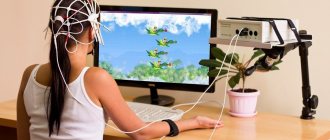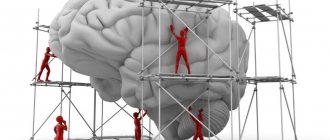For centuries, people have been trying to understand the relationship between a person’s physical appearance and his mental state. Either they believed that they had no contact with each other, or they called somatics a bridge between them. And there are also concepts for which phobias, dominant feelings, temperament, some mental disorders and other personality traits leave subtle imprints on a person’s appearance. And, if you see them and eliminate them, you can cope with many problems. Body-oriented therapy, or TOT for short, deals closely with this.
What it is
Body-oriented therapy is a direction in psychology and psychotherapy that eliminates problems and treats neuroses through various techniques of bodily contact.
The founder is Wilhelm Reich (mid-20th century) - an Austrian and American psychologist, Freud's only student. Stepping back from his teacher’s psychoanalysis and taking only a few points from it, he created his own concept of how to help people resolve difficult life situations and treat various types of mental disorders. To do this, in his opinion, it is necessary to influence in a certain way the weak “zone” of the human body that has suffered due to psychological trauma.
Over time, it turned out that working with such problem areas not only really brought calm and peace to the people coming to the session, but also significantly improved their physical well-being. Due to this, Reich gained many followers, and his therapy became widespread throughout the world.
Despite many grateful reviews, today it belongs to pseudoscientific industries, whose effectiveness has not been confirmed by research. The weakly defined theoretical evidence base that TOT actually works does not stand up to criticism either.
Documentation
Certificates and licenses
Learn now - pay later!
The first six months are free.
No money to pay for tuition now? Start the program with payment in six months when you find a job!
Interesting? Your personal manager will tell you detailed conditions. Leave a request.
The offer is valid for retraining programs in all areas costing from 15,000 rubles
.
Your request has been accepted! We will contact you shortly!
Form processing error! Please write us an email!
*By clicking the button, you consent to the processing of personal data.
Basics
Basic Concepts
Body-oriented therapy is based on a fundamental concept, without which this direction cannot be imagined. This is a bodily shell, although it has many other synonymous terms: muscular, muscular, characterological armor, muscle clamps, ego-defense. In total, the human body is divided into 7 problem areas, where it can form in accordance with the received psychological trauma.
According to Wilhelm Reich, the bodily shell is the body’s defenses, physically suppressing fears, internal anxiety, complexes and everything that poses a threat to the psyche.
Orgone energy is what Reich called libido, known to everyone according to Freud, which is released as a result of working with shells.
Unraveling is the name given to the process of releasing muscle tension in body-oriented therapy.
Shell formation diagram
Unlike all other areas, body therapy closely connects what is happening in a person’s soul with his appearance. According to her teaching, contact between them is established as follows:
1. Psychotrauma.
2. The specific situation associated with it is causing concern.
3. A person seeks to protect himself from this anxious state and a repetition of what happened.
4. He suppresses his fear with the help of “muscle clamps” in a certain part of the body.
5. This forms simultaneously:
- character or pattern of behavior;
- bodily shell.
An example of how this scheme works in practice:
1. At school, the child is constantly told that he is nothing.
2. He doesn’t want to go to school because of this.
3. Since this must be done day after day, he tries to avoid direct contact with the one who tells him this.
4. Does not look into the eyes, lowers his gaze, closes his eyes, wrinkles his forehead.
5. This forms:
- low self-esteem;
- body shell "Blocks in the eye segment."
Scheme of working with the shell
To help a person solve his problems, body psychotherapy works in parallel with both entities - external and internal:
- The type of bodily shell is revealed, and where exactly it is located.
- Gradually relieve tension from the problem area of the body using various techniques.
- Along the way, psychotrauma is revealed.
- Parallel work is underway with it.
- Orgone energy is released.
- Neurotic and other disorders are cured.
For a long time, within the framework of body-oriented psychotherapy, specialists worked only with muscle tension, believing that after their elimination, psychological trauma would automatically disappear. And only after a while it was concluded that it was necessary to remove both at the same time. This way you can ensure a lasting effect of the sessions and a guarantee that the problem will not return again.
Body-oriented therapy in working with children with psycho-emotional disorders
“The best gift we can give a child is not so much to love him, but to teach him to love himself.” Jacques Salome
Kinesitherapy
- dance therapy, choreotherapy, body-oriented art therapy, corrective rhythm - therapeutic effects with movements.
Kinesitherapy
is a type of therapy based on the unity of movement. Various forms and means of movement change the overall reactivity of the body, increase its stability, destroy pathological stereotypes that arise during illness, and create new ones that provide the necessary adaptation.
The body is the mirror of the soul
“A healthy mind in a healthy body” (“Spiritus sano in corpore sano”) - this expression is known to many. The body is a continuation of our psyche. Typically, mental health problems begin with physical or emotional stress. All our thoughts and actions are imprinted in the body. Fatigue and stress gradually accumulate, causing energy to be blocked and bodily tensions to arise, which inevitably leads to illness.
Behavior associated with physical touch during contact is called heptika. Typically, researchers distinguish between the words touch (active, intentional, conscious, often with hands) and contact (random, accidental contact between any part of the body.). In addition, the human body has a peculiarity: a fleeting light accidental touch can cause a disproportionately stronger effect.
Thus, the American psychologist M. Knapp conducted an experiment. When issuing new library cards to students, the librarian touched the hands of some of them with his fingers. Otherwise, the attitude towards readers was the same. At the end, students were asked to give an overall rating on a rating scale, both to the librarian and to the library as a whole.
Those who were touched (especially girls) rated both the librarian and the library more highly than those who were not touched. Moreover, it does not matter whether he felt the touch (i.e., subthreshold signals are also read by the whole body).
In Western society, touching during contacts between strangers is not encouraged. If adults accidentally touch each other, for example, in transport, then it is customary to apologize. This is apparently due to the fact that in this society physical touching is assigned a sexual context (after the “revolution” caused by the works of Z. Freud). However, during communication between familiar people, touching is allowed when it is necessary to encourage, express sympathy, support.
Airport research has shown that 60% of people who meet and break up touch each other. When parting, the touch lasts longer. More often the initiators of touch are men, less often women.
The relationship between the body and the mental state of a person has been established for a long time, so active research in this area helps to significantly expand the possibilities of psychotherapeutic treatment. Body-oriented therapy acts as an independent direction in psychology, possessing a clear concept and a variety of practical developments.
“The body remembers everything” – this is one of the laws of body-oriented psychotherapy. The body stores all the memories and emotions we experience. Feelings and fears that a person ignores result in health problems, and if you continue to ignore them, more and more such problems will appear. Each part of the body is responsible for certain human fears, and depending on where the unpleasant sensations arise, you can determine what the person is afraid of.
Our Consciousness does not want to acknowledge some feelings, so they scatter throughout the body and settle in certain places. This mechanism in psychology is called “repression.” In the Unconscious, painful experiences, thoughts and memories, including a person’s fears, are repressed. To remind themselves, they transform into illnesses, thus hidden feelings try to attract attention to themselves.
How to draw an individual bodily map of fears?
You will need a blank sheet of paper and drawing tools (not markers or pens).
1. Draw your body.
2. With your eyes closed, try to feel your body. Do you feel tension? Are you comfortable? Do you feel warm?
3. As you continue to feel your body, ask yourself: “Where does fear live in my body?”
4. Mark in the picture the places where fear lives. There may be several such areas, somewhere a person’s fear is expressed more, somewhere less - you can express this with the help of flowers.
Body map of human fears: where the experiences are hidden
1. Legs. Pain in the legs may indicate a fear of losing stability and support. A person does not feel confident in the future.
2. Pelvis. Problems in the pelvic area indicate a person’s fears in the sexual sphere. This fear provokes the development of various diseases, and also prevents women from achieving orgasm.
3. Belly. Discomfort in this area is due to a person’s fear for life. Perhaps the situation of a threat to life was not real, but even when the danger passes for the Unconscious it remains relevant. In this regard, it is not possible to achieve complete relaxation and feel safe.
4. The area of the diaphragm, including the stomach and solar plexus. Social fears have taken hold in this zone. A person's fear is to be rejected by society.
5. Chest. In this zone, the map of fears reflects a person’s fear of loneliness; the person is afraid of being rejected as an individual.
6. Hands. Through this part of the body, a person’s fear of contact with the world is expressed. Often people who hide this fear choose a profession where they do not need to communicate with others.
Problems with the brushes indicate problems with communication. The right hand indicates the fear of men, and the left - women.
7. Back. Discomfort in this area indicates that a person is afraid of appearing imperfect, not meeting the expectations of others. Perfectionists often face this problem.
As for the shoulders, they symbolize responsibility and strength. Pain in this area is associated with a person’s fear of being weak or not being able to cope with responsibility.
8. Neck. Frequent sore throats, a feeling of tightness and tickling haunt people who find it difficult to express their feelings. Constant tension in the neck occurs because every time feelings want to come out, the neck contracts and keeps them inside.
9. Face. On the bodily map of fears, the face symbolizes the fear of “losing face.” Such people need love and approval, so in order to please everyone they have to constantly wear masks.
10. Eyes. Fear of reality affects one of the main channels of perception. A person refuses to see the truth, which results in vision problems.
Emotions cannot be kept to yourself; secret fears are the cause of most diseases. By coping with your inner experiences, you can get rid of health problems.
Theoretical and practical systems of body-oriented psychotherapy are based on the belief that there is a strong relationship between a person’s physical and mental health. Thus, a psychologically enslaved, withdrawn person will also be enslaved physically. That is why, by influencing a person’s bodily shell, one can eliminate or minimize his psychological disorders.
Gait, facial expressions, gestures, manner of walking, favorite poses - this is the language of our body, which will tell a knowledgeable person a lot: about his problems in the family, character traits, complexes and fears. A person’s physical condition can tell about his internal problems, his mental and emotional state. The human body reflects all his feelings, emotions, experiences and fears. This is why psychotherapists and psychologists around the world pay such special attention to teaching body-oriented psychotherapy.
It is well suited for working with emotional disorders of children, adolescents and adults in hospitals, clinics and specialties. schools. TO therapy can also help people with physical disabilities improve their self-esteem and learn balance and coordination.
The analytical psychology of C. Jung had a great influence on the development of body-oriented therapy. “A body without a soul tells us nothing, just as - let us take the point of view of the soul - the soul cannot mean anything without a body...” “...thoughts can lie, feelings can lie. The only thing that never lies is the body and dreams”...
Throughout life, desires, feelings, and prohibitions are “coded” by the human body, creating blocks and armor. Body contact plays a huge role in a person’s life from birth, when the mother’s touch opens the world to the child even before he begins to become aware of himself.
For children under one year old, tactile contact is vital, as is nutrition or sleep. The child should be stroked at least 8 times a day. And even better is 20. It's not about quantity, but about quality. It is better to hug once so that the child feels: you need him, he is loved, than 8 times but formally. Research by psychologists on the signs of physical contact between people has shown that if a child is deprived of the touch of human hands and the body, his development is slow socially, emotionally and physically.
But, of course, it is also important for older children. The fact that children like to hug less as they get older is a disservice to us. Many parents say: “You’ve already grown up, you’re like a little kid.” This is how the need for physical contact is prohibited. However, this need still exists. Even the most “hedgehog”, that is, “prickly” children need it. For children, the most beloved and important ones are their parents. And it is important for them to feel with their bodies that their parents need them.
Research by Sidney Jourard has shown that touching from others occurs most often from a loved one of the opposite sex. The mother’s touches are just as frequent (though only in certain areas and only up to a certain age).
Let us recall that touching (as opposed to touching) is an intentional, conscious action and is most often performed with the hands; it conveys a more active nature of actions on the part of a particular person.
Scheme of touches according to S. Jourard.
M F M F Mother's touch Father's touch M F M F Same-sex friend's touch Friend's touch
opposite sex
— 76 – 100%
— 51 – 75 %— 26 – 50%-0 – 25%
In the process of personality formation, difficulties appear in growing up, the costs of education, numerous stresses suppress the feelings and sensations of the body, and contribute to the impoverishment of emotions. Deeper experiences are consolidated in the body's memory. This is how a “muscular shell” is formed, zones and nodes of chronic tension and clamps, which reduces the mobility of the body’s vital resources. The ability to enjoy life is lost, as the armor blocks possible negative and positive sensations inside and outside the body.
From the above, we can conclude that this therapy is a type of therapy that uses movement to develop a person's social, cognitive, emotional and physical life. It can be used in working with children with a variety of emotional problems, decreased intellectual capabilities and serious illnesses.
The use of movements in the correction of a child’s psycho-emotional states is based on the principle of a close relationship between emotional experiences and bodily tension according to the theory of bodily therapy by W. Reich and A. Lowen. The essence of this theory is that the mental trauma a person receives during his life lies in the so-called muscular armor, which inhibits impulse and free expression of emotions.
There are seven main muscle segments: at the level of the eyes, mouth, neck, chest, diaphragm, abdomen and pelvis, in which various negative emotions are “clogged” - fear, anger, resentment. Relieving such physical tension through movement, dance or special rhythmic exercises creates the conditions for the expression of a person’s feelings, thoughts and emotions. A flexible, disinhibited body turns out to be more capable of a wide range of emotional experiences and the release of negative emotions.
TOT techniques are used for such manifestations as:
- - Anxiety, excitability, tearfulness
- — Aggressiveness
- — Fears and phobias
- - Obsessions and stereotypies
- - Difficulties with communication, shyness, tightness
- - Closedness, closedness
- — Psychosomatic problems:
- — Tics, enuresis, stuttering, vomiting not caused by nervousness, gastrointestinal disorders, osteochondrosis, etc.
Awareness of the capabilities of your body in performing certain poses, movements, gestures also means awareness of your feelings.
All theoretical concepts of bodily psychotherapy have practical forms of application, which consist of a number of exercises aimed at achieving certain goals:
• stress relief;
• relieving chronic fatigue;
• treatment of neuroses, depression;
• getting rid of fears;
• getting rid of feelings of dissatisfaction
- Increased self-esteem
Thanks to bodily therapy exercises, the patient will be able to learn to relax, listen to his body, understand it and find harmony with the world around him.
The use of elements of animal therapy techniques allows you to regulate
family relationships. This allows parents to find contact with children in a playful way.
with your child, relieve muscle tension in the body, receive positive emotions,
to trust each other.
Body-oriented exercises:
"Puppets"
The psychologist asks the children to imagine that they are soft rag toys that
hanging by threads.
Children stand in a circle and raise their hands. At the psychologist's command, consistently
perform the following movements: lower the hands down; bend your elbows;
relax your hands and they fall down; bend the torso and lower the head; bend
knees and squat.
(relieving body muscle tension, receiving positive emotions)
"Recumbent Eight"
Children join their palms and extend their arms forward.
The psychologist stands opposite the children, performs the same movements and says:
- Imagine that your fingertips are connected to my invisible threads.
Where my hands move, so will yours.
The psychologist begins to slowly “draw” a sign with his joined palms
infinity:
During the exercise, it is recommended to “draw” five such eights.
When finished, children shake their hands.
"Stork Pose"
The child stands straight with his feet in place. Raising your hands up, palms forward, you need to
bend over and inhale slowly bend over. In this case, you need to grab with your hands
shins. We must try not to bend our knees, it would be good to touch with our forehead
knees. You can breathe freely. Hold the pose for 10-15 seconds and then slowly
straighten up.
"Get a hold of yourself"
As soon as you feel that the child is restless. wants to hit someone
throw something, there is a very good way to prove your strength to yourself: clasp your palms
elbows and press your hands tightly to your chest - this is the pose of a self-possessed person.
"Snowman"
An adult invites children to turn into a snowman. Children get tense
arms to the sides, puff out their cheeks, make a sad face and stand motionless in place.
The teacher says: “Our snowman stood like this all winter, but now spring has come,
the sun warmed up and the snow began to melt.” Children gradually relax, lower their
hands, “go limp”, expose their face to the sun and squat down.
"Pencils"
Adult. Fingers are pencils and you need to put them in the box and clench your fist.
You have to squeeze it hard. otherwise the pencils will fall.
After a few seconds, the teacher suggests taking out the pencils and unclenching your fist.
The children wiggle their fingers: “Those are the pencils!”
The child kneels, arms and hips should be placed perpendicular to the floor and
perpendicular to each other. Smoothly raise your head, bend as far as possible
lower back. You need to hold the pose for 10-15 seconds. Breathing is even and calm.
Ask your child to think about something kind and joyful.
"Angry Cat Pose"
It is useful to alternate with the good cat pose. The starting position too. Further
the child lowers his head and smoothly arches his back upward. Breathing is voluntary.
The child is asked to think about what makes him angry and angry. Hold the pose for 10-15 seconds.
“Getting into the character”: a relaxed person with straight shoulders, head held high and a free gait; be a playing child, a cat, etc. Walk “through quicksand,” through a swamp, along a polished slippery parquet floor, along a muddy road in high-heeled shoes. Imagine yourself as a bush growing from a seedling, a flower opening. Walk around in a polar explorer's suit, in overalls, in a mink coat, in an evening dress with a train, in a swimsuit.
“Motivated running or walking”: against the wind, through dew, through a swamp, over an abyss, through a gorge; rushing to work, from work, on a date, to the pool. Movement against the crowd, if we don’t want to excite someone, wake up someone, if we are angry and angry, if we are going to do something unpleasant for ourselves.
"Dialogue of body movements." For two minutes, communicate with your partner using pantomime in the following roles: teacher and student, parent and child, sorcerer and zombie, thief and policeman, man and woman, strength and weakness, activity and passivity, rudeness and softness, love and hate, acceptance and rejection, disappointment and satisfaction, boredom and interest, etc.
"Snake". The group lines up behind the leader and moves behind him, repeating all his movements; then the driver moves to the end of the line, and the next participant becomes the driver.
"Glass Cobra" Participants stand at the back of the head, close their eyes and feel the back of the person in front, trying to remember him. The presenter says “Ding!”, the “cobra” breaks and for a minute the “pieces” wander around the room, protecting themselves with outstretched palms. At the leader’s signal, the “cobra” begins to grow together.
"Confusion". Participants join hands, forming a chain, the driver leads it, stepping over the hands of others and entangling. The participant, who has been waiting outside the door all this time, enters and tries to untangle the chain. When he succeeds, he changes roles with the leader.
"Chaotic movement." Participants freely position themselves in space and, on command, begin to quickly move randomly, colliding with each other.
Noah's Ark sets sail in five minutes. Everyone receives a card on which the name of the animal is written, which they will have to silently portray. Someone has a card with the same name. We need to find our match.
"Zoo". Each member of the group depicts an animal of his choice in a cramped enclosure.
"Penguins". During frost, penguins huddle together to keep warm; those who find themselves on the edge try to squeeze deeper into the pack.
"Against the movement." Participants stand in a circle, close their eyes, and place their hands in front of their chests, palms facing out. At the leader’s signal, everyone moves to the other side of the circle.
"Meeting on a narrow bridge." Squeeze towards each other through a narrow passage formed by the participants, and at the same time miss your partner: through a narrow door, between two puddles, on a narrow bridge.
"Stumps and bulldozers." The stumps, having taken root, stand firmly. Bulldozers try to push them out of place or drag them from it, grabbing them by the arms.
“Transmission in a circle” of rhythm, movement or an imaginary object: a bowl of wine, a peace pipe, a kitten, a hedgehog.
"Original". Each one passes in front of the group in a manner different from the others.
"Studies with imaginary objects." Play with an imaginary ball, feel an invisible wall, open a window, find the right book in the bookcase, drop your favorite cup, fry an egg.
"Unclench your fist." One clenches his fist, the other must, without words, make his fist unclench.
"Quiet Lake"
Adult. Stand comfortably, close your eyes and listen to my voice.
Imagine a wonderful sunny morning. You are near a quiet
beautiful lake. All you can hear is your breathing and the splash of water. The sun is shining brightly
the rays warm you, you feel better and better. You hear the birds singing and
the chirping of grasshoppers. You are absolutely calm. The sun is shining, the air is clear and
clean You feel the warmth of the sun with your whole body. You are calm and still like this
quiet morning. You feel calm and happy, you are too lazy to move.
Every cell of your body enjoys peace and the warmth of the sun. You
relaxing...
Now open your eyes. We are at school, we had a good rest, you are in good spirits
mood, and pleasant sensations will be with you throughout the day.
Methods of bodily psychotherapy are especially effective for the treatment of psychosomatic diseases, neuroses, the consequences of mental trauma (developmental trauma, shock trauma) and post-traumatic stress disorders, depressive states. Body-oriented therapy can also be called a tool for personal growth, allowing for a more complete disclosure of personal potential, increasing the number of ways of self-expression available to a person, expanding self-awareness, communication between people and improving physical well-being.
Thank you for your attention!
References
1. https://lib100.com/book/art_therapy/techniques/ 2. https://www.therapy.by/therapy/telesno-orientirovannaya_terapiya/
3. https://www.uaua.info/planirovaniye-semji/beremennost/article-11385-emotsionalnyie-problemyi-u-detey-telesno-orientirovannaya-terapiya-kak-metod-korrektsii/
4. https://psyera.ru/2453/uprazhneniya-po-telesno-orientirovannoy-terapii
Methods
Based on the concept of Wilhelm Reich, various methods of body-oriented psychotherapy and approaches to the relationship between the body and psyche were created.
Basic methods of body-oriented therapy:
- bioenergy system therapy (bioenergy system therapy, BEST) E. I. Zueva: impact on the mind, feelings and body to treat the psyche;
- vegetative (somatic, bodily) therapy by W. Reich;
- movement practice of M. Feldenkrais, the goal of which is to teach a person to move correctly (like children) in order to relieve muscle tension;
- organismic psychotherapy by M. Brown: the shell is considered as a mismatch between the body and the brain;
- radix (source of vital energy) C. Kelly - a group version of body-oriented therapy;
- Rosen method M. Rosen: work with tense muscles in combination with verbal contact;
- Rolfing (structural integration) I. Rolf: work on improving gait, posture, sitting style, communication style, their relationship with behavioral patterns;
- somatic psychotherapy of biosynthesis by D. Boadella: work with 3 life streams - endoderm, mesoderm and ectoderm;
- body-oriented bioenergetic psychoanalysis (bioenergetics) by A. Lowen;
- Hakomi (body-centered psychotherapy) by R. Kurtz: the main methods are dance-movement therapy, yoga, meditation.
Partially based on body-oriented therapy are methods such as:
- Core-energy D. Pierrakos;
- biodynamics G. Boysen;
- insight therapy (bodily insight) by M. Belokurova;
- primary therapy by A. Yanov;
- process-oriented psychotherapy by A. Mindella;
- psychology of somatic development (bodynamics, bodynamic analysis) L. Marcher;
- thanatotherapy (death treatment) V. Baskakov;
- sensual (sensory) awareness Sh. Selver.
And these are not all methods. Their abundance proves the popularity of this trend.
Types of bodily shell
Despite such a huge number of techniques, almost all of them rely in their theoretical basis on those types of bodily armor that Wilhelm Reich once identified.
Ophthalmic
What's included: eyes, eyebrows, forehead, scalp.
External signs of the shell:
- feeling of a motionless mask on the face;
- shifting gaze;
- the person never makes eye contact;
- deep vertical wrinkles on the bridge of the nose and multiple wrinkles on the forehead.
Internal problems: social fears, inability to establish interpersonal contacts.
Somatics: vision problems, headaches, tearfulness.
Oral/maxillary
What's included: back of the head, chin, throat.
External signs:
- tense jaw;
- grimacing;
- habit of always chewing gum;
- “shaking nodules”;
- reticence.
Internal problems: secrecy, the need to keep everything to yourself, restrain anger.
Somatics: usually no complaints.
Throat/cervical
What's included: tongue, neck.
External signs:
- neurotic cough;
- quiet voice;
- frequent swallowing.
Internal problems: the same as with a jaw clamp, but deeper, going back to childhood (for example, resentment towards parents).
Somatics: frequent sore throats, constant lump in the throat.
Chest
What's included: chest, shoulders, shoulder blades, arms.
External signs:
- labored breathing;
- incorrect posture;
- unnatural position of the shoulders (lowered, raised, asymmetrical);
- lack of body flexibility.
This is interesting! According to body-oriented therapy, anyone can check their acquaintances for the presence of a chest shell and thereby determine whether they are happy or not. To do this, just call out to him when the person’s back is to you. If he turns his whole body, the clamp and problems are obvious. If he turns only his head or only the upper part of his body, he is fine.
Internal problems: suppression of basic human feelings - love, dreams, jealousy, hobbies. In socially oriented therapy, the chest shell is evidence that the patient is deeply unhappy.
Somatics: shoulder pain, shortness of breath, hyperhidrosis of the palms.
Diaphragmatic
What is included: diaphragm, solar plexus, lower vertebrae.
External signs:
- scoliosis;
- difficulty in exhaling.
Internal problems: prohibition on expressing feelings of disgust and disgust. Often this type of shell is observed in those who are forced to live, work or simply communicate with an unloved and even disgusting person.
Somatics: frequent vomiting, pulmonary diseases.
Abdominal
What's included: belly, back.
External signs: protruding, large belly.
Internal problems: fear of attack, anger, hostility.
Somatics: obesity, digestive problems.
Pelvic
What's included: pelvis, lower limbs.
External signs:
- the pelvis protrudes backward;
- tense buttocks;
- half-bent gait.
Internal problems: inability to satisfy arousal, suppression of sexual pleasure, feeling of threat to life.
Somatics: weak, wobbly legs, trembling knees.
Technicians
Working with a patient, a body therapist uses various techniques to relieve muscle tension. And some of them are familiar to everyone:
- various types of massage;
- manual therapy;
- breathing exercises;
- yoga;
- regular sets of exercises from sports programs;
- dancing;
- gymnastics for the face;
- acting skills.
In body-oriented therapy, areas of art therapy are often used. In particular, dance and drama. There are also entire sets of movement exercises developed specifically for TOT, for example, by Frederick Matthias Alexander and R. Laban.
To work with psychotrauma, conventional techniques and techniques are used, typical of all areas of psychotherapy: conversation, group trainings, affirmations, hypnosis.
Help from a professional mentor in building a career
While studying at NADPO, you receive support from a professional HR mentor in finding employment, namely:
Help in writing a resume and finding a new high-paying job
Checklist on how to choose a company for long-term employment
Weekly newsletter with a selection of vacancies in an interesting area
Consultation on how to quickly and efficiently complete the probationary period
Answers to questions about how to achieve professional growth, how to avoid burnout, etc.
Chirchenko Anna Alexandrovna
Head of Personnel Department, ANO DPO "NADPO"
Expert in personnel selection, career guidance consultant
Has more than 15 years of experience in the largest Russian and European companies
Completed more than 50 advanced training courses in various areas of HR
Leave a request for training
Your application has been accepted, we will contact you shortly!
and get information on how to find a job after receiving your diploma
*By clicking the button, you consent to the processing of personal data.
On practice
Body-oriented therapy is used to treat various personality and behavioral disorders and to eliminate psychological problems. In particular - neuroses, stress, post-traumatic disorders, depressive states, psychosomatic diseases. Let's give a few examples of how this works in practice.
For children
Body-oriented therapy is useful for children who have already encountered stress in their lives, are characterized by increased anxiety, autism, shyness, and cannot control their emotions and actions. TOT allows them to normalize their mental state, helps them calm down, get rid of emotional excitement and psychological trauma, increase their level of awareness, and survive negative life experiences.
Despite the simplicity of many exercises, specialists should work with children.
There are several universal exercises that will help relieve your child of muscle tension throughout the body.
- "Doll Soldier"
Task No. 1 is to stand up straight, tensing all parts of the body, pretending to be a soldier. Stand without moving for several minutes (depending on the age of the child). Task No. 2 is to sharply relax the body and become a rag doll without bones for a while. These positions need to be changed 2-3 times. Perform 2-3 times a day.
- "Seed"
The child curls up in a low squat and pretends to be a seed planted in the ground. The specialist pretends to water it, dig it in, care for it, and look after it. From time to time, an adult notes that the plant has grown, it has leaves, a bud, a flower. According to his story, the child slowly straightens his body.
When working with children, TOT also uses fairy tale therapy, breathing exercises, role-playing games, and group trainings.
For women
Body-oriented therapy is simply necessary for women because, in addition to mental and physical health, it provides beauty and youth to the body. Now many TOT centers are opening special courses for this. Work is carried out with all segments, regardless of whether there is a shell there or not:
- ophthalmic – cleansing the eyes and eliminating wrinkles on the face;
- oral - the ability to control your speech organs so as not to talk idle talk;
- throat/neck – the ability to express one’s emotions through singing;
- chest - development of straight posture, improvement of heart function;
- diaphragmatic - mastering breathing exercises;
- abdominal - cleansing of the gastrointestinal tract, correction of the waist and sides;
- pelvic – working with maternal instincts, reproductive functions, and one’s own orgone energy.
Body psychotherapists promise to turn any woman with the deepest complexes into a real queen in just 10 sessions (each lasts about 2 hours).
